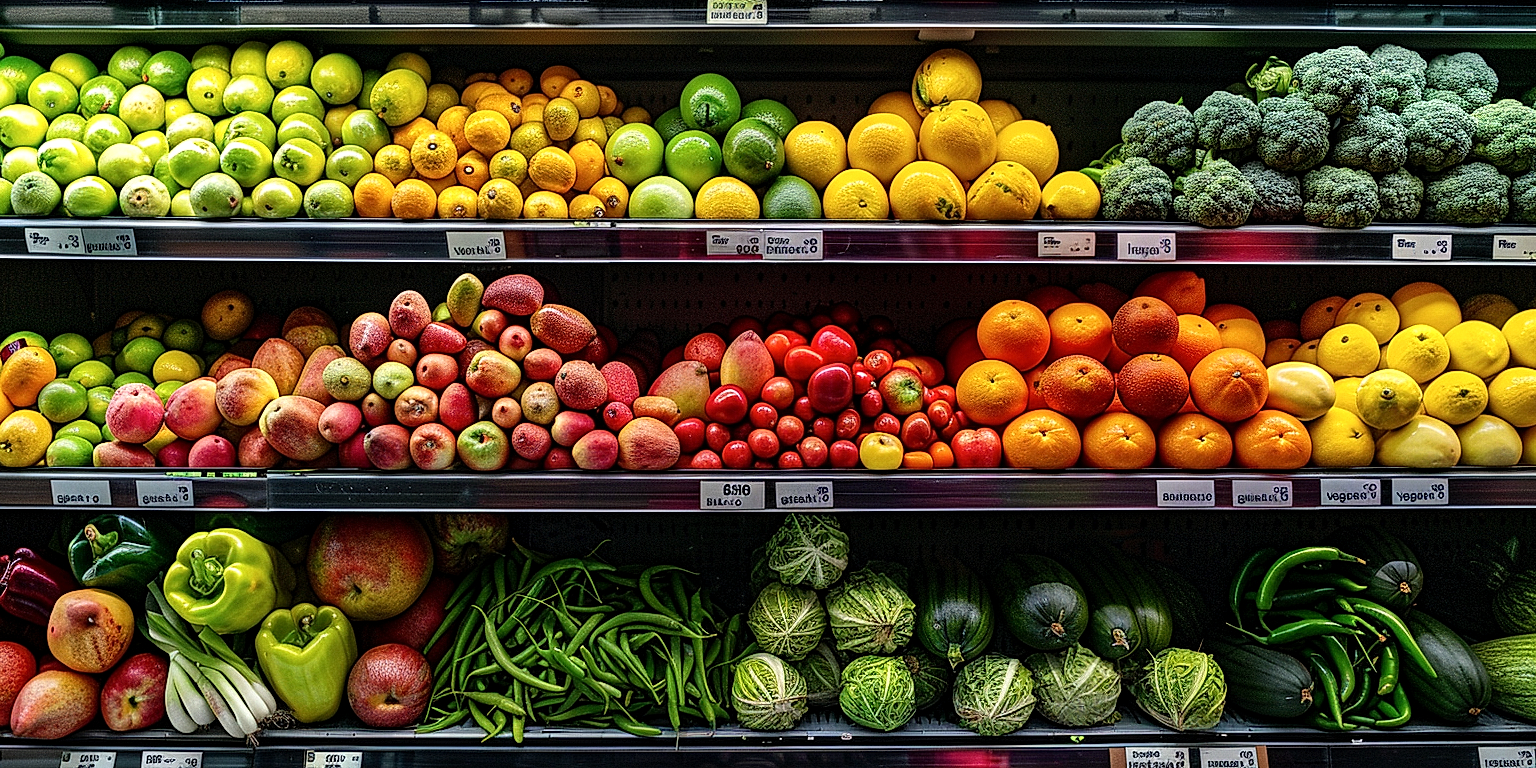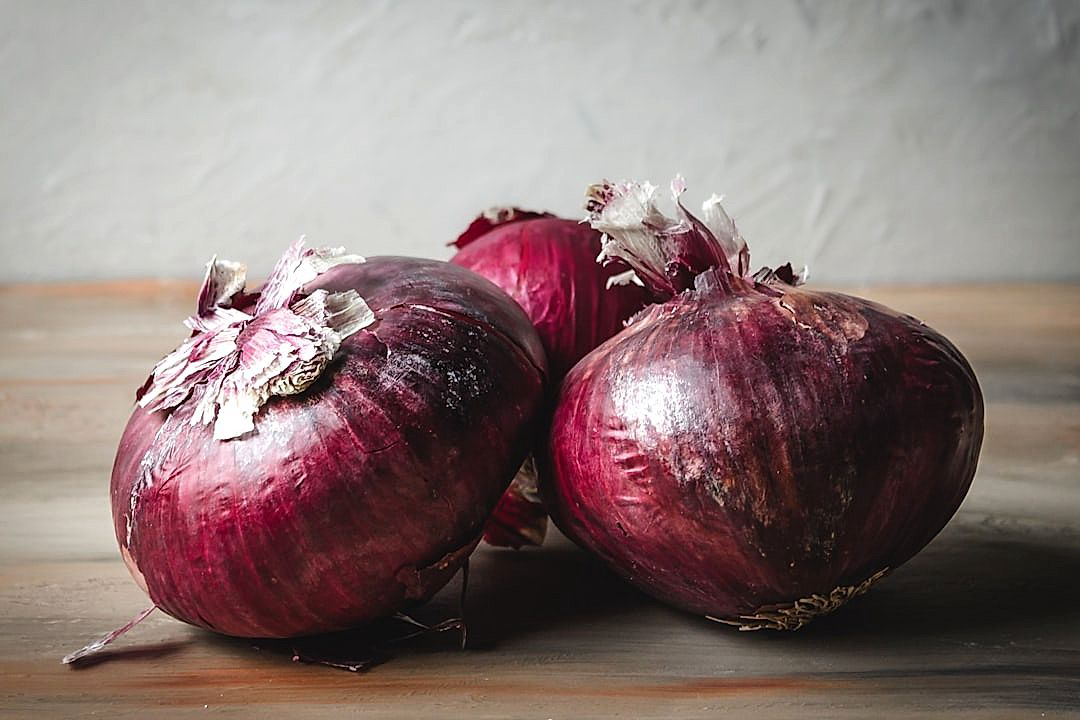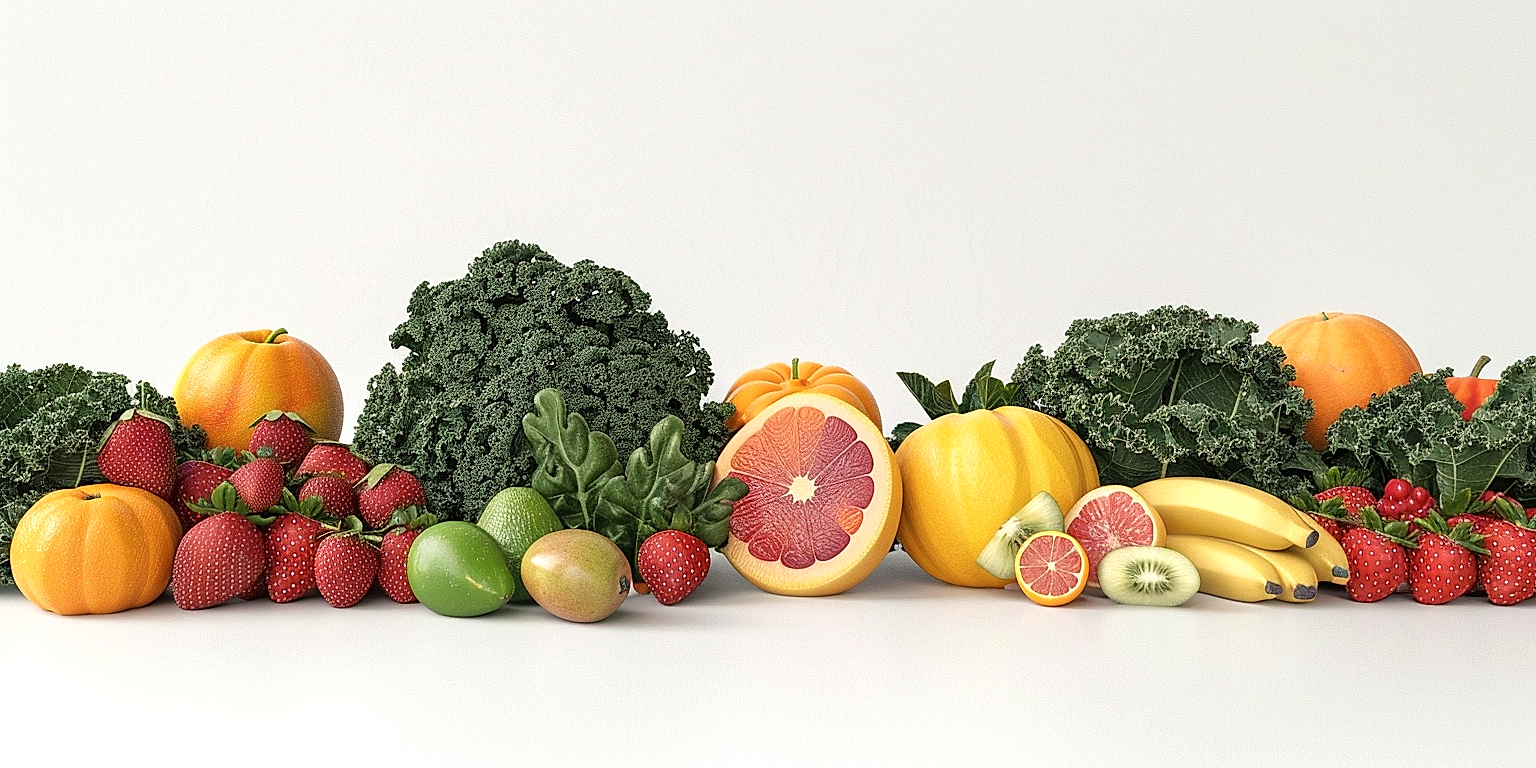Seasonal fluctuations pose a significant challenge to the produce retail sector.
Their sheer predictability calls for robust strategies to manage the ebb and flow effectively.
Yet, they often serve as a litmus test to the resilience and preparedness of retailers.
This puts a spotlight on how retailers react and plan for seasonal shifts in consumer demand patterns.
Having foresight and adaptability can ensure a seamless supply and demand balance, providing a competitive advantage.
Unpacking the complexity of these strategies requires a deep understanding of market dynamics and consumer trends.
Contents
- Strategies For Managing Seasonality In Produce Retail
- 1. Source from multiple, geographically-diverse suppliers
- 2. Utilize cold storage for off-season items.
- 3. Promote in-season products through sales/discounts.
- 4. Diversify Product Offerings to Include Processed Produce
- 5. Use predictive analytics to inform buying decisions
- 6. Educate customers on the benefits of seasonal eating
- 7. Implement a Robust Inventory Management System
- 8. Establish strong partnerships with local farmers
- 9. Offer Pre-orders for High-Demand Seasonal Items
- 10. Incorporate seasonal produce into prepared meals.
- The Bottom Line
Strategies For Managing Seasonality In Produce Retail
1. Source from multiple, geographically-diverse suppliers
In the world of produce retail, diversity of suppliers is an essential strategy in managing seasonality.
When a retail outfit sources its products from multiple suppliers located in different geographic locations, it mitigates the risk associated with local fluctuations in produce availability.
This approach involves partnering with growers across various climates and regions where the timing of producing seasons can differ.
Such an arrangement allows a retailer to have a consistent supply chain throughout the year even when some types of produce are off-season in certain regions.
This strategy not only ensures a reliable supply of products, but it also offers buyers a variety of produce to choose from at any given time.
The diverse range of climatic conditions from different geographic locations can make it possible to find any available product during any season.
This approach does not just ensure continuous supply but also helps to keep the prices stable by preventing supply-demand imbalances that can cause price hikes.
A geographically diverse sourcing strategy also contributes to business resilience, as it offers a form of insurance policy against local environmental issues that may impact crop productivity.
For instance, if a particular region gets hit by a pest outbreak or extreme weather condition, the retailer can still source produce from other regions where these problems do not exist.
The need to source from multiple, geographically-diverse suppliers does not mean that local suppliers should be ignored.
Instead, retailers should strike a balance between sourcing domestically and internationally, ensuring they can support local economies while maintaining a flexible and resilient supply chain.
A geographically-diverse sourcing strategy may also reduce the retailer’s carbon footprint as produce can be sourced from the closest location where it is in season, minimizing the distance it has to travel.
As a result, this approach can align with customers’ increasing demand for sustainable and environmentally-friendly products.
However, this strategy requires a significant degree of logistical expertise, as managing suppliers from different time zones and coordinating the transportation of fresh produce over long distances can be challenging.
In the end, the main aim of sourcing from multiple, geographically diverse suppliers is to ensure a year-round supply of fresh produce, satisfying customer demand, and facilitating income stability for the retailer.
2. Utilize cold storage for off-season items.
One of the central challenges in retailing produce is managing the seasonality of supply.
Many varieties of fruits and vegetables are only available during certain periods of the year, and demand may not coincide directly with these periods.
Implementing the usage of cold storage facilities can provide a valuable strategy for addressing this seasonality issue in produce retail.
By storing off-season items in controlled conditions, retailers can extend their shelf life and make them available to consumers year-round.
This not only provides a consistency of supply but also accommodates consumer preferences for certain items irrespective of the season.
The technology related to cold storage has advanced significantly in recent years.
Modern cold storage facilities offer advanced temperature control settings, humidity adjusters, and specially designed storage units for different types of products.
This allows retailers to store a wide range of fruits and vegetables, from apples to zucchinis, in optimal conditions.
One crucial aspect of utilizing cold storage is proper inventory management.
Once the items are in cold storage, it is crucial to keep a close tab on inventory levels and rotation schedules.
Products should be brought into the store following a first-in-first-out (FIFO) system to ensure quality and minimize waste.
While incorporating cold storage into operations incurs an initial investment, the returns in the form of extended sale periods and increased customer satisfaction can more than make up for it.
Moreover, the use of cold storage aligns well with the trend of environmental sustainability in retail.
By reducing food waste and optimizing the use of harvested produce, retailers employing cold storage are contributing to a more sustainable food system.
Overall, the utilization of cold storage for off-season items provides a viable and effective strategy for managing the seasonality challenge in produce retail.
3. Promote in-season products through sales/discounts.
Promoting in-season products is a fantastic way to manage seasonality in produce retail.
Such a strategy encourages customers to buy and consume fresh produce when it’s at its peak quality, and it’s plentiful in the market.
This approach also aligns with the idea of seasonal eating, which comes with a whole set of benefits.
Being proactive in offering sales and discounts on season-sensitive goods can act as an enticement for consumers.
It’s a win-win scenario where customers get to enjoy reduced prices for high-quality goods, while retailers are able to move inventory quickly.
Strategically timed sales and discounts on in-season produce items can significantly boost turnover and profits during peak seasons.
This is because consumers tend to buy more when they feel they’re getting a ‘deal’, leading to increased sales volumes.
Moreover, buying produce in season usually means the goods are fresher, and customers can appreciate the noticeable quality and taste differences.
Thus, promoting in-season products can help enhance customer satisfaction and loyalty.
Using vibrant displays, eye-catching signage, and other promotional materials, can effectively draw attention to the seasonal items on sale.
These visual elements help tell a compelling story, making it even more enticing for shoppers to add these healthy items to their baskets.
It’s important to communicate the benefits of consuming in-season produce, like fresher taste, higher nutritional value, and cost savings, to customers.
These messages can be effectively relayed through various marketing channels, like social media, email newsletters, or flyers.
Highlighting recipes or meal ideas featuring the in-season produce on sale can further inspire shoppers and influence their buying decisions.
The strategy could also involve offering bundled discounts, such as ‘buy one get one free’, or ‘x% off if you buy two’, which can increase the average purchase value.
Finally, this tactic supports the retailer’s commitment to sustainability practices, by encouraging seasonality and diminishing food miles.
4. Diversify Product Offerings to Include Processed Produce
In the context of managing seasonality in produce retail, it is important to consider diversifying product offerings to include processed produce.
This strategy not only provides a way to preserve fresh produce that is abundant in one season for sale in off-seasons, but it can also help attract more customers by offering a wider variety of items.
In addition to fresh produce, retailers can offer canned, frozen, dried, or even pickled varieties of fruits and vegetables.
These products can often be sourced year-round, help to reduce waste from unsold fresh produce, and can add another element of convenience that many customers appreciate.
Furthermore, having processed produce in the retail mix could help stabilize revenue streams for retailers since these items aren’t as subject to the fluctuations of seasonality.
Predictable sales from processed produce can supplement the more volatile revenue from fresh fruits and vegetables, contributing to a more balanced retail operation.
The challenge here, however, is to maintain the perceived quality of your product offerings.
Customers do not necessarily equate canned or frozen goods with ‘fresh’ quality, so these items need to be processed and presented in a way that still communicates high quality to your customers.
Therefore, it is crucial to ensure that the processing methods retain the nutritional value and taste of your produce.
In retail settings where introducing these items might seem out of place, consider how they can complement fresh produce – selling canned tomatoes alongside fresh ones for example.
Incorporating processed produce can also support sustainability goals for the business, by utilizing imperfect produce or those near expiration that would otherwise be discarded.
There’s an opportunity to educate your customers about the values of processed produce, both in terms of nutritional value and sustainability, which can help to encourage more people to choose these items.
Diversifying product offerings to include not only fresh, but also processed produce is a versatile strategy for managing the challenges of seasonality in the produce retail business.
It requires careful planning and execution but can offer several advantages like increasing variety, reducing waste, maintaining stable revenue streams, and enhancing sustainability practices in your business.
5. Use predictive analytics to inform buying decisions
As a crucial component of managing seasonality in produce retail, using predictive analytics to make buying decisions plays a significant role.
It involves leveraging the power of big data to forecast patterns and trends, informing both short-term and long-term purchasing decisions.
By analyzing past sales data, seasonal patterns, demand trends, and market research, predictive analytics can offer insights into future consumer buying behavior.
This plays a key role in helping retailers determine what products to stock, how much to purchase, and when to do so.
In order to maintain a steady supply of produce, it’s crucial for retailers to forecast demand accurately. This can help prevent overstocking or understocking, both of which can lead to lost revenue and increased waste.”
For example, if a retailer is able to accurately predict a spike in demand for strawberries during the summer months, they can plan their buying accordingly to ensure they have enough stock to meet customer needs.
On the other hand, overstocking can lead to issues like spoilage and waste. This is particularly important for produce which has a limited shelf life and therefore requires careful management.
By using predictive analytics, retailers can gain better control over their inventory, reducing waste and increasing efficiency.
This, in turn, contributes to a stronger bottom line and a better shopping experience for customers.
Additionally, predictive analytics can also be used to inform pricing decisions. By analyzing the impact of price changes on demand and comparing these to past trends, retailers can set optimal prices that maximize revenue without deterring customers.
Though implementing predictive analytics may require an upfront investment in technology and skills, the potential benefits make it well worth considering.
Indeed, predictive analytics is becoming an increasingly essential tool for modern retailers who want to stay competitive in today’s fast-paced marketplace.
As we continue to discuss strategies for managing seasonality in produce retail, it’s clear that predictive analytics plays a pivotal role in ensuring the efficient stocking, pricing, and selling of seasonal produce.
Therefore, retailers willing to leverage the potential of big data will not just survive, but thrive in the ever-evolving world of produce retail.
6. Educate customers on the benefits of seasonal eating
Produce retail can greatly benefit from customer education on the vitality of seasonal eating.
Seasonal eating not only supports local agriculture and farmers, but also provides nutritional benefits and enhances flavor experiences for consumers.
By understanding these benefits, consumers will be more inclined to purchase seasonal produce.
It can also emphasize the importance of supporting local produce economies as opposed to mass-produced imported goods.
Educating customers about the benefits of seasonal eating has the potential to fundamentally reshape their shopping habits and preferences.
When consumers learn about the environmental impact of their food choices, it can encourage more sustainable purchasing.
Indeed, eating locally-grown, in-season produce cuts down on long-haul transportation and associated fossil fuel emissions.
Moreover, local seasonally harvested fruits and vegetables can be more fresh, flavorful, and packed with nutrients as compared to imported produce which may lose nutrients during transportation.
Thus, it is important for retailers to provide information about the growing season and origin of their produce to aid customers in their quest for seasonal eating.
Retailers can achieve this through on-product labeling, in-store merchandising, newsletters, and social media campaigns.
Further, stores can also hold cooking classes or workshops, showing their clientele how to prepare meals using in-season produce.
This is an advantageous strategy that can bolster customer loyalty while contributing to community health.
In-store tastings or samplings can also be used to demonstrate the superior taste of in-season versus out-of-season produce.
It will serve as a reminder of the unique flavors and textures that each season has to offer thus fostering a greater appreciation for seasonal produce.
This strategy of education not only encourages consumers to shop more effectively, but it can also inspire them to try new varieties of produce that they would not have considered before.
Ultimately, educating customers on the benefits of seasonal eating can fortify the relationship between consumers and local food systems, creating a more sustainable future for all involved.
7. Implement a Robust Inventory Management System
A key strategy in managing seasonality in the produce retail business is the implementation of a robust inventory management system.
This system is vital in ensuring the efficient handling of inventory from multiple suppliers, guaranteeing that all are sufficiently stocked with a variety of products throughout the year.
Equally important is the fact that with a reliable system in place, potential stockouts and overstocks can be accurately predicted and effectively managed.
Accurate data collection on product demand and consumption rates is also made possible with a well maintained inventory management system.
By collecting data, products’ sales performance can be tracked, helping retailers make informed decisions about which products to stock or discontinue.
Their decision-making process is thus based on accurate, up-to-date information, and not on gut feelings or rough estimates.
This ensures that only popular and profitable products are stocked, while slow-moving ones can be phased out, thereby maximizing revenue and optimizing product shelf space.
Furthermore, an effective inventory management system helps in reducing spoilage and waste of perishable products, which is deliberately necessary in the produce retail sector.
This is achieved through the efficient managing of products’ expiry dates, ensuring that they are sold off well before their shelf life runs out.
Additionally, constant monitoring of storage conditions is also enabled by an adept inventory management system, thereby preserving the quality and freshness of stored produce.
Operation costs could be significantly reduced by implementing a sound inventory management system since it mitigates unnecessary wastage and inefficiencies in the procurement and storage processes.
Moreover, a comprehensive inventory management system assists in maintaining good relationships with suppliers by ensuring that payments and reordering of stock are carried out in a timely and organized manner.
There’s a heightened chance of securing better deals and discounts from suppliers with this level of coordination and professionalism.
The success of seasonal sales and promotions also hinges on the reliability of the inventory management system.
Finally, a well-oiled inventory management system is a necessity for scaling and growth, able to handle an increase in supplies, variety of products, and customer demand as your business grows.
Therefore, any serious produce retailer must prioritize the implementation of a robust inventory management system for its operation’s success and profitability.
8. Establish strong partnerships with local farmers
Establishing strong partnerships with local farmers is a crucial strategy for managing seasonality in produce retail.
In a seasonal market, these partnerships allow you to secure a consistent supply of in-season produce.
By working closely with local farmers, retailers can anticipate the availability of specific produce and prepare inventory accordingly.
Developing a symbiotic relationship with local farmers not only ensures steady produce supply but also supports local economies.
Collaborating with local farmers also creates opportunities for co-promotion and joint marketing efforts.
You can feature the farmers and their produce in your marketing materials, boosting the visibility and credibility of both parties.
It’s essential to nurture these partnerships by treating farmers fairly, compensating them well, and standing by them in challenging times.
Supporting local farmers during crop failures or unfavorable market conditions strengthens the partnership and gives a sense of stability to your supply chain.
Knowing your farmers and their farming practices closely can also help you ensure the quality of the produce you retail.
Local farmers can also be a valuable source of insights and knowledge about seasonal trends, consumer preferences, and unique local varieties that could be incorporated into your product offerings.
Furthermore, you can collaborate with farmers to plan crops strategically based on the demand patterns of your customers.
You can leverage these partnerships to offer pre-orders of high-demand seasonal items, adding a new level of service for your customers.
Foster the connection between your customers and your farmers by telling their story and incorporating the ‘local’ narrative in marketing campaigns.
Local cooperation can even extend to community events or farmer’s market days in your retail store, creating unique selling propositions that differentiate you from competitors.
Indeed, partnerships with local farmers form the bedrock of a sustainable, community-oriented approach to managing seasonality in the produce retail sector.
9. Offer Pre-orders for High-Demand Seasonal Items
Oftentimes, the demand for specific seasonal produce may exceed their availability.
This is particularly true when it comes to highly coveted fruits and vegetables that are only grown during certain times of the year.
As a produce retailer, the last thing you want is to disappoint your customers by constantly running out of these popular items.
One excellent strategy to avoid this situation is to offer pre-orders for high-demand seasonal items.
When customers pre-order, they essentially reserve the product in advance, which ensures that they can get their desired items without fear of selling out.
This can be a strong selling proposition for your business, and customers are likely to appreciate this service.
Not only does it secure the items they want, but it also eliminates the anxiety of not knowing whether those items will still be available next time they visit your store.
Besides customer satisfaction, there are several practical reasons for a retailer to adopt a pre-order system.
One of these is that it helps you to predict demand and control inventory more accurately.
Having pre-orders provides visibility into sales before the season even begins.
This allows you to manage your ordering and stock replenishment more effectively, thereby reducing the risk of overstocking or understocking.
From a financial perspective, pre-orders can also be a beneficial tactic for improving cash flow.
Many businesses choose to require customers to pay upfront for pre-orders, which can help fund the purchasing of the stock.
Another benefit of accepting pre-orders for seasonal items is the opportunity to build a stronger relationship with your customers.
The pre-order process involves a level of trust, as customers are committing to purchase your products ahead of time, which can foster deeper trust and loyalty towards your business.
10. Incorporate seasonal produce into prepared meals.
One way of combating the seasonality challenge in produce retail is by incorporating seasonal produce into prepared meals.
This can be very effective in promoting what is currently abundant and reducing potential waste.
It not only draws on the freshness of currently in-season items, but also adds variety to the offerings throughout the year.
Prepared meals with in-season produce can demonstrate to customers the utility of the season’s bounty and inspire them to purchase more.
This also maximizes sales of items which are more plentiful, often cheaper due to the law of supply and demand, and at the peak of their freshness and flavor.
Retailers can collaborate with local chefs or cooking professionals to create tempting, ready-to-eat meals that highlight the best of the season.
Each month could feature a new menu based on what’s currently available, making the shopping experience more exciting and dynamic for the customers.
This approach can also provide added value for customers who are looking for convenience in their shopping.
Including recipe cards or cooking instructions for these meals can be an additional incentive for customers to buy more of the seasonal produce.
This also provides an opportunity for the retailer to educate customers about the benefits and delights of eating seasonally.
The practice of incorporating seasonal items in prepared food also provides a platform for the retailer to showcase lesser-known or underappreciated items.
Some fruits or vegetables might not be as popular because customers do not know how to prepare them or are unfamiliar with their taste; however, by including them in a prepared meal, retailers can demonstrate how to use these items and provide a taste experience.
Retailers can also encourage customers to pre-order these seasonal meals, which helps with inventory management and reduces wastage.
The idea of incorporating seasonal produce into prepared meals could also extend to other areas of the store, such as a juice bar using seasonal fruits and vegetables, or a bakery incorporating seasonal items into their baked goods.
The concept is not limited to direct in-store sales either; retailers could explore opportunities for partnerships with local restaurants, caterers, or meal delivery services to extend the reach of their seasonal offerings.
The Bottom Line
The implementation of the outlined strategies in your business model will deliver considerable benefits, including supply chain resilience, cost-saving, increased customer satisfaction, and ultimately, higher profits.
Sourcing from multiple suppliers and utilizing cold storage will guarantee a consistent quality supply of produce.
Promoting in-season produce, diversifying offerings, and incorporating fresh, seasonal goods into meals will stimulate consumer interest and sales.
Meanwhile, the use of predictive analytics and a robust inventory management system will streamline operations and reduce waste.
Furthermore, through education of customers on the benefits of seasonal eating and strong partnerships with local farmers, you can foster a loyal customer base who appreciates the ethos of your business.
Offering pre-orders also enables tapping into customer’s anticipation for their favorite seasonal items.
Indeed, such smart, innovative methods are essential in staying competitive in today’s dynamic market.




